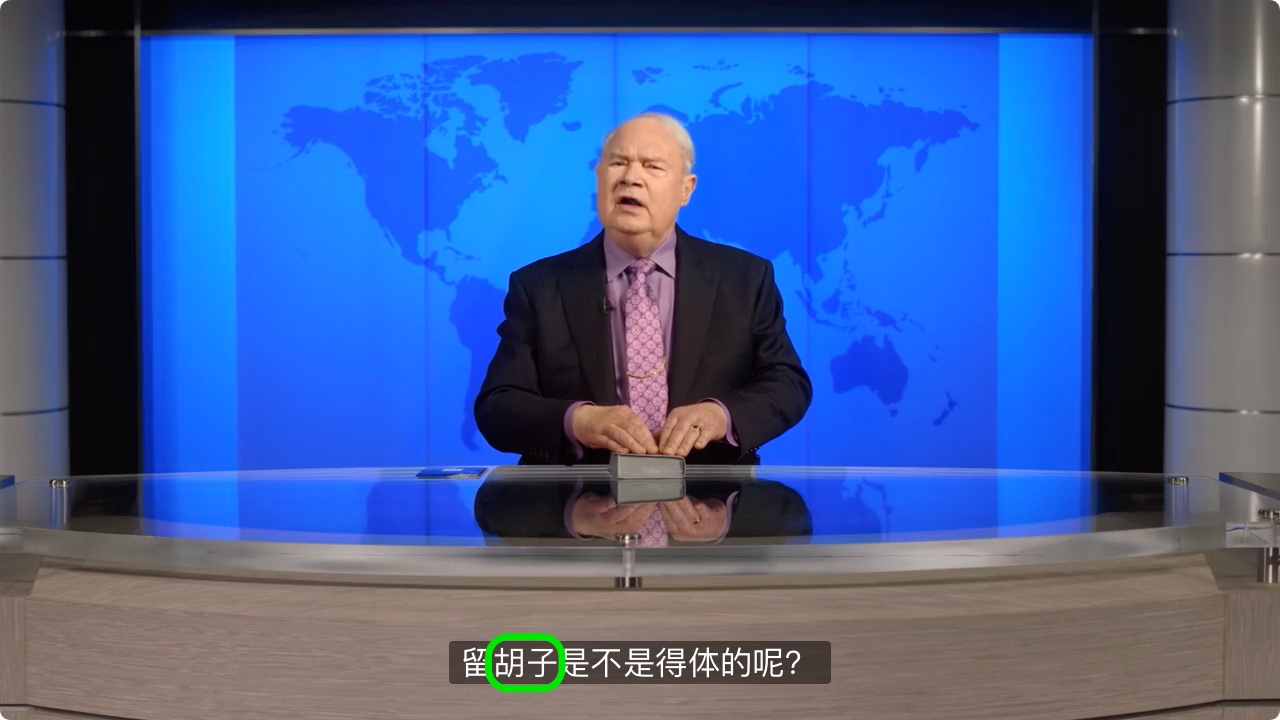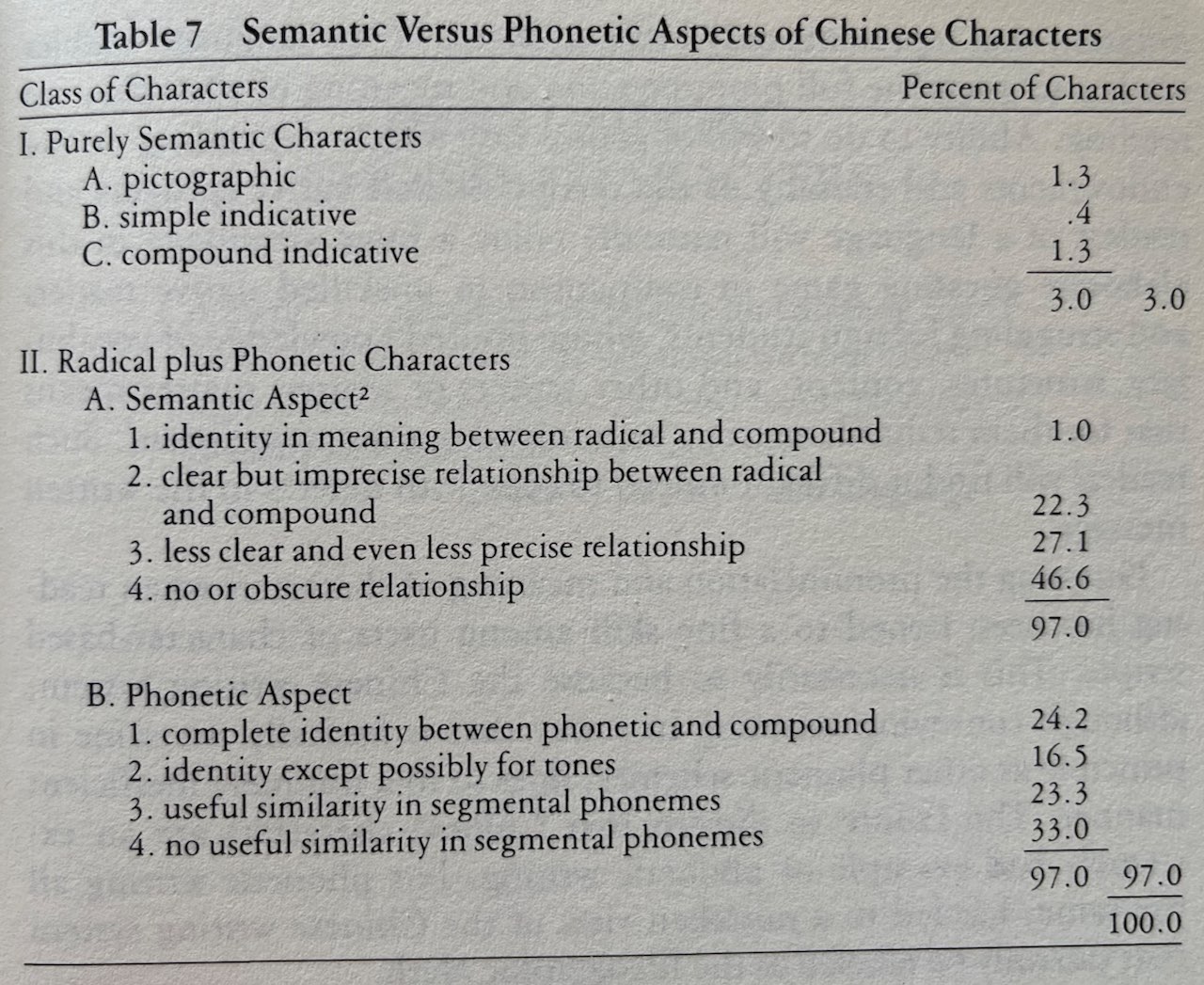húzi (hú·zi beard; moustache; whiskers · [suf for nouns] → [beard; moustache; whiskers] 胡子 鬍子) ← Tap/click to show/hide the “flashcard”
This week’s MEotW, “húzi (hú·zi beard; moustache; whiskers · [suf for nouns] → [beard; moustache; whiskers] 胡子 鬍子)”, is used, along with the expression “húxū (hú·xū beard; moustache; whiskers · beard; moustache 胡须 鬍鬚)”, to translate “beard” in the Mandarin version of the 2023 Governing Body Update #8 video.

Morphemic Breakdown
In “húzi (hú·zi beard; moustache; whiskers · [suf for nouns] → [beard; moustache; whiskers] 胡子 鬍子)”, “hú (beard; moustache; whiskers 胡 鬍)” means “beard; moustache; whiskers”. (Note that this is the meaning of the Simplified Chinese character “胡” when it corresponds to the Traditional Chinese character “鬍”. This Simplified character can also correspond to the Traditional characters “胡” and “衚”, which have different meanings.)
As for “zi ([suf for nouns] 子)”, it is used in “húzi (hú·zi beard; moustache; whiskers · [suf for nouns] → [beard; moustache; whiskers] 胡子 鬍子)” as a suffix that is attached to nouns. Other examples of this in use are:
- cèzi (cè·zi brochure; booklet · [suf for nouns] 册子 冊子)
- dùzi (dù·zi belly; abdomen; stomach; bowels · [suf for nouns] 肚子)
- rìzi (rì·zi {sun → [day]} · [suf for nouns] 日子)
- shīzi (shī·zi lion · [suf for nouns] 狮子 獅子)
- qīzi (qī·zi wife · [suf for nouns] 妻子)
- érzi (ér·zi son · [suf for nouns] 儿子 兒子)
- háizi (hái·zi child · [suf for nouns] [→ [son; daughter]] 孩子)
- sūnzi (sūn·zi grandson · [suf for nouns] [→ [son’s son]] 孙子 孫子)
In specific cases, like in “nánzǐ (nán·zǐ male · person [→ [man]] 男子)” and in “nǚzǐ (nǚ·zǐ female · person [→ [woman]] 女子)”, “子” is written in Pīnyīn (Pīn·yīn {Piecing Together of} · Sounds → [Pinyin] 拼音) with a third tone, and is used to mean “person”.
Avoiding Unnecessary Divisions
One of the things that the above-mentioned video touches on is that we should not let the matter of beards become a cause for division among God’s people. In the Mandarin field, it may be that some hesitate to use or speak of Pīnyīn (Pīn·yīn {Piecing Together of} · Sounds → [Pinyin] 拼音), out of concern about causing real or perceived division, since many Mandarin field publishers are still accustomed to the traditional primacy of Chinese characters in worldly Chinese culture. Of course, we should avoid using or speaking about Pīnyīn (Pīn·yīn {Piecing Together of} · Sounds → [Pinyin] 拼音) in situations and ways that would truly lead to unnecessary division among Jehovah’s people—every situation is different, and we must try our best to be motivated by Christian love and to use discernment and sound judgment in every situation.
Also, let me emphasize that I, on this blog or anywhere else, do not presume to be giving authoritative spiritual direction to any of God’s people—that is the privilege and responsibility of the slave class. (Matthew 24:45–47) Rather, like any publisher who gives talks, gives comments, or just discusses various subjects both technical and spiritual with fellow believers, I seek to share what I have learned from my studies and my experience, that hopefully can be helpful to fellow workers in Jehovah’s service.
Beards vs. Writing Systems
One thing I notice is that while the Bible and the organization have specifically commented on and provided direction for God’s people living in different time periods concerning beards, it seems that neither the Bible nor the organization has specifically commented on or provided direction about any particular writing system like Chinese characters or Pīnyīn (Pīn·yīn {Piecing Together of} · Sounds → [Pinyin] 拼音). (Note, though, that the organization’s actions may have done some speaking of their own—over time, overall, the organization has gradually been making available more and more official material that contains Pīnyīn (Pīn·yīn {Piecing Together of} · Sounds → [Pinyin] 拼音).)
As far as I know and can recall, one of the only scriptures in the Bible from which we can gain some insight about writing systems is 1 Corinthians 14:8–11:
8 For if the trumpet sounds an indistinct call, who will get ready for battle? 9 In the same way, unless you with the tongue use speech that is easily understood, how will anyone know what is being said? You will, in fact, be speaking into the air. 10 It may be that there are many kinds of speech in the world, and yet no kind is without meaning. 11 For if I do not understand the sense of the speech, I will be a foreigner to the one speaking, and the one speaking will be a foreigner to me.
This scripture speaks about the primary importance of understandable speech when it comes to how Christian ministers should use language, while not bothering to even mention writing systems. This reflects well the reality that linguists are familiar with, that because of the way that Jehovah created us humans to use language, speech is primary, and writing is secondary, if anything. Indeed, many, many languages don’t even have a writing system! And yet, as Revelation 14:6 shows us, this does not stop the preaching of the good news in any of these tongues, that is, spoken languages:
And I saw another angel flying in midheaven, and he had everlasting good news to declare to those who dwell on the earth, to every nation and tribe and tongue and people.
(Interestingly, while it mentions “every…tongue”, or spoken language, this scripture doesn’t bother to mention writing systems either.)
So, while the prevailing worldly Chinese culture may tell us that Chinese characters are awesome and that we should all primarily focus on learning them, the Bible and the organization consider beards more worthy of mention than writing systems like Chinese characters. One thing that the above-mentioned video points out as something to avoid is “contradicting the guidance from the organization”, and it’s not difficult to avoid this with regard to, say, Chinese writing systems when there is no guidance from the organization about this subject (unless one has a tendency to, say, carry on as if there has been guidance from the organization to focus on Chinese characters when, actually, as far as I am aware, there has not been any such guidance, and what writing system to use remains a personal decision).
At the same time, though, if we focus on the inhumanly and unnecessarily numerous and complex Chinese characters so much that our abilities to understand spoken Mandarin and to speak Mandarin understandably remain seriously underdeveloped, then we would obviously not be following the counsel at 1 Corinthians 14:8–11 about the need to prioritize and use understandable speech in our ministry.
Traditions and Divisions
It is evident, then, that if any publisher were to make a fuss in support of the Chinese characters writing system or opposing or ridiculing the Pīnyīn (Pīn·yīn {Piecing Together of} · Sounds → [Pinyin] 拼音) writing system, that publisher would be doing so because of some mixture of personal opinion/ignorance, human tradition, and cultural pride, not because of any scriptural basis or direction from the organization. And, as we should know, the Bible and the organization DO have a lot to say about the importance of NOT doing things because of things like personal opinion/ignorance, human tradition, and cultural pride. Such things can certainly cause unnecessary division among God’s people, since our unity as God’s people comes, not from together following human traditions and ways of doing things, but from together following direction from the Bible and from God’s organization. Let us, then, follow the actual direction from the Bible and from God’s organization so that we can build each other up spiritually, and so that we can really do the best we can to help praise and glorify Jehovah—not any human culture—and accomplish well the great work that he has given us to do in these last days.
